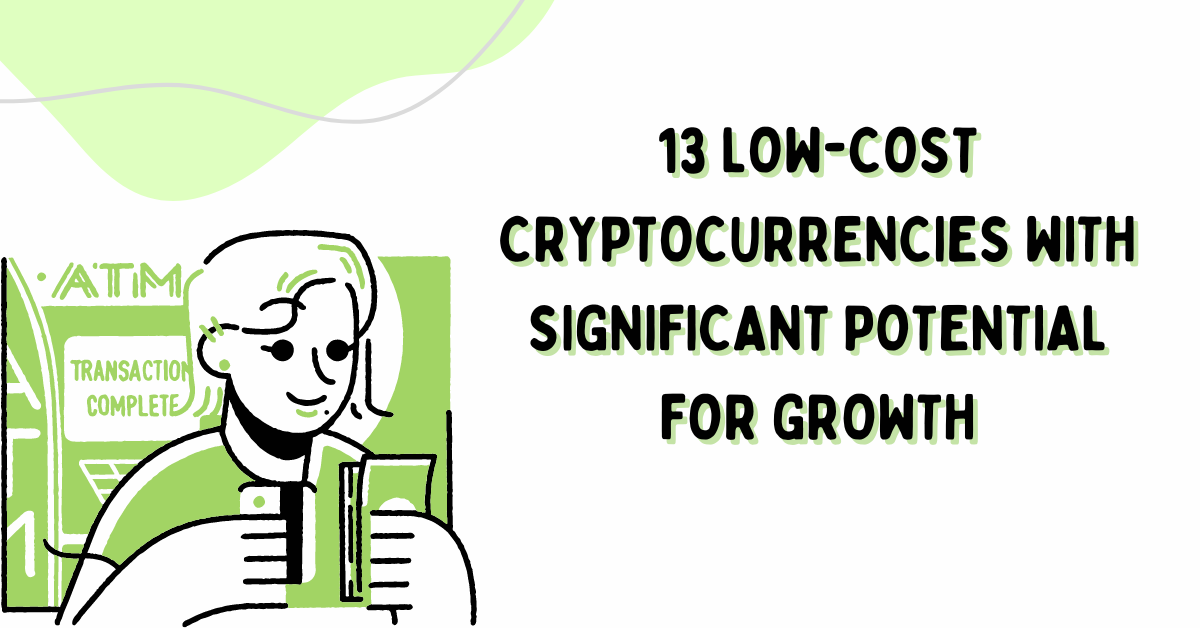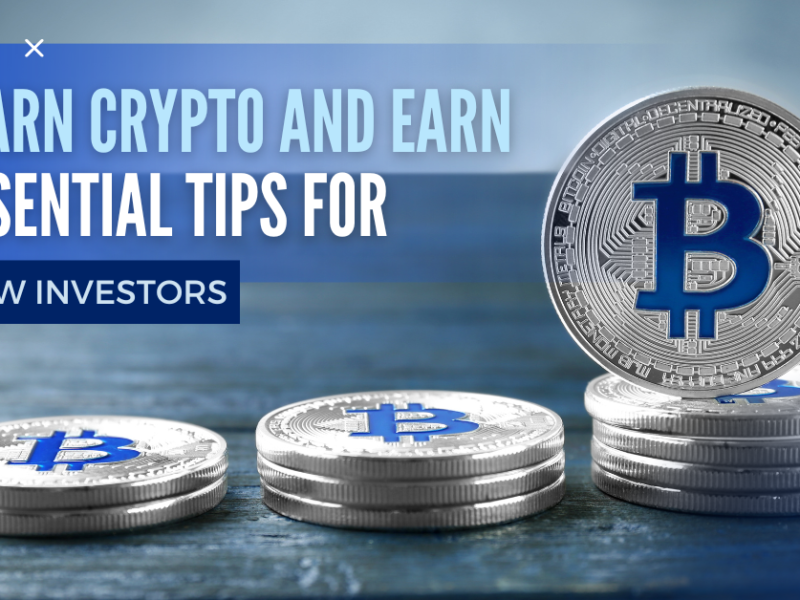Cryptocurrencies have taken the financial world by storm, offering investors new opportunities for growth and innovation. While many people are familiar with popular cryptocurrencies like Bitcoin and Ethereum, there are numerous low-cost alternatives with significant potential for growth. In this guide, we’ll explore 13 such cryptocurrencies that may offer promising investment opportunities for those seeking high potential upside at a lower cost.

1. Cardano (ADA)
Cardano is a blockchain platform known for its focus on scalability, interoperability, and sustainability. Developed by a team of engineers, mathematicians, and researchers, Cardano aims to provide a more secure and scalable infrastructure for the development of decentralized applications (dApps) and smart contracts. With a strong community and active development team, Cardano has the potential to compete with leading blockchain platforms like Ethereum in the long term.
2. Chainlink (LINK)
Chainlink is a decentralized oracle network that enables smart contracts to securely interact with external data sources, APIs, and payment systems. By bridging the gap between blockchain and real-world data, Chainlink facilitates the development of advanced smart contracts for various industries, including finance, insurance, and supply chain management. With growing adoption and partnerships with leading companies and blockchain projects, Chainlink is well-positioned for continued growth and expansion.
3. VeChain (VET)
VeChain is a blockchain platform designed for supply chain management and product authentication. By leveraging blockchain technology, VeChain enables businesses to track and trace the lifecycle of products from manufacturing to consumption, ensuring transparency, authenticity, and quality control. With partnerships with major companies and government agencies, VeChain has the potential to revolutionize the global supply chain industry and drive widespread adoption of blockchain technology.
4. Stellar (XLM)
Stellar is a decentralized payment network and protocol that facilitates fast, low-cost cross-border transactions. Designed to connect banks, payment systems, and people, Stellar aims to make financial services more accessible and affordable for individuals and businesses worldwide. With partnerships with major financial institutions and a focus on financial inclusion, Stellar has the potential to become a leading player in the global payments industry.
5. Theta Token (THETA)
Theta Token is a blockchain-powered video delivery network that aims to revolutionize the online streaming industry. By decentralizing video delivery and incentivizing users to share bandwidth and resources, Theta Token enables content creators to reduce streaming costs and improve streaming quality for viewers. With partnerships with major media companies and a growing user base, Theta Token is poised for significant growth in the streaming and entertainment sector.
6. Basic Attention Token (BAT)
Basic Attention Token is a blockchain-based digital advertising platform that aims to improve the efficiency and transparency of online advertising. By leveraging blockchain technology, BAT enables advertisers to reward users for their attention and engagement with targeted ads and content. With a focus on user privacy and data ownership, BAT has the potential to disrupt the digital advertising industry and create a more equitable and transparent ecosystem for advertisers and consumers.
7. Siacoin (SC)
Siacoin is a decentralized cloud storage platform that enables users to rent out their unused storage space and earn rewards for hosting files on the network. By leveraging blockchain technology and encryption, Siacoin provides a secure, private, and cost-effective alternative to traditional cloud storage providers. With a growing user base and partnerships with major companies, Siacoin has the potential to disrupt the centralized cloud storage industry and drive widespread adoption of decentralized storage solutions.
8. Ren (REN)
Ren is an open protocol that enables the transfer of assets between different blockchain networks in a decentralized manner. By facilitating interoperability between blockchains, Ren aims to create a more connected and accessible ecosystem for decentralized finance (DeFi) applications and services. With partnerships with leading DeFi projects and a focus on cross-chain liquidity, Ren has the potential to become a key infrastructure layer for the future of blockchain interoperability.
9. Holo (HOT)
Holo is a decentralized hosting platform that enables users to host and serve decentralized applications (dApps) on the internet. By leveraging peer-to-peer networking and blockchain technology, Holo aims to create a more decentralized and resilient internet infrastructure that is resistant to censorship and control. With a focus on user sovereignty and data ownership, Holo has the potential to empower individuals and businesses to take back control of their online presence and data.
10. Zilliqa (ZIL)
Zilliqa is a high-performance blockchain platform that aims to address the scalability challenges facing existing blockchain networks. By implementing sharding technology, Zilliqa enables parallel transaction processing and higher throughput, making it suitable for applications that require high transaction throughput and low latency. With partnerships with major companies and a focus on scalability and security, Zilliqa has the potential to become a leading platform for decentralized applications and digital assets.
11. Nano (NANO)
Nano is a decentralized digital currency that aims to provide fast, fee-less, and scalable transactions for everyday use. By utilizing a unique consensus mechanism called the Block Lattice, Nano enables instantaneous transactions without the need for miners or transaction fees. With a focus on usability and accessibility, Nano has the potential to become a preferred payment solution for merchants and consumers worldwide.
12. Decentraland (MANA)
Decentraland is a virtual reality platform built on the Ethereum blockchain that enables users to create, own, and monetize digital assets and experiences. By leveraging blockchain technology and non-fungible tokens (NFTs), Decentraland empowers users to buy, sell, and trade virtual land, digital assets, and virtual experiences in a decentralized marketplace. With a growing user base and partnerships with major companies, Decentraland has the potential to become a leading virtual world platform for gaming, entertainment, and social interaction.
13. Fantom (FTM)
Fantom is a high-performance, scalable blockchain platform that aims to enable fast and secure transactions for decentralized applications and enterprise use cases. By implementing a novel consensus mechanism called the Lachesis protocol, Fantom achieves high throughput and low latency, making it suitable for applications that require real-time transaction processing and high throughput. With partnerships with major companies and a focus on scalability and interoperability, Fantom has the potential to become a leading platform for decentralized finance, enterprise solutions, and smart cities.
Conclusion
While investing in cryptocurrencies carries inherent risks, low-cost cryptocurrencies with significant growth potential can offer investors an opportunity to diversify their portfolios and participate in the burgeoning digital asset ecosystem. By conducting thorough research, staying informed about market trends, and exercising caution and diligence, investors can identify promising investment opportunities and potentially capitalize on the long-term growth prospects of low-cost cryptocurrencies.
Remember to always do your own research and consult with a financial advisor before making any investment decisions.



Hello
Thanks
3.3.2024💕